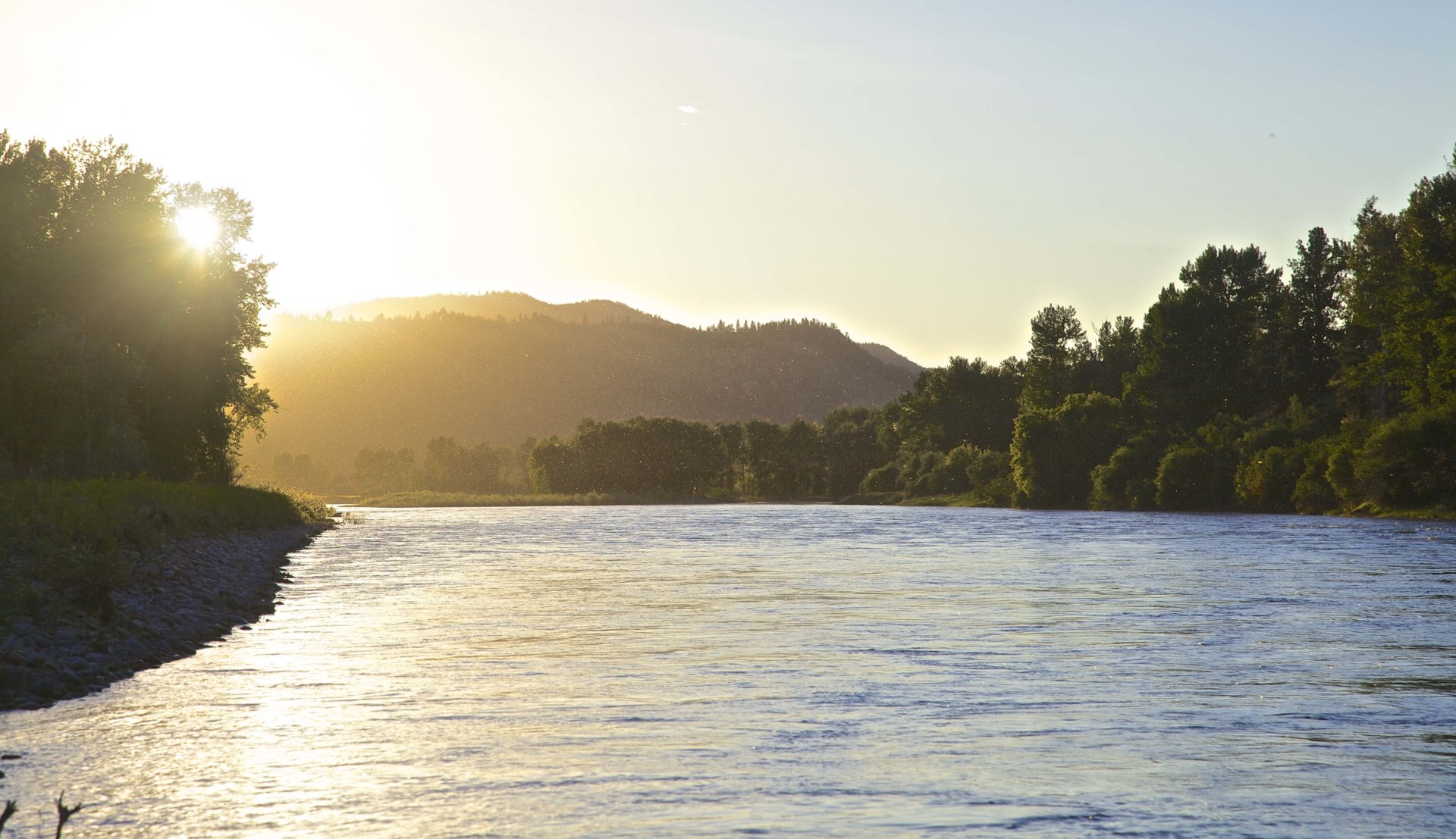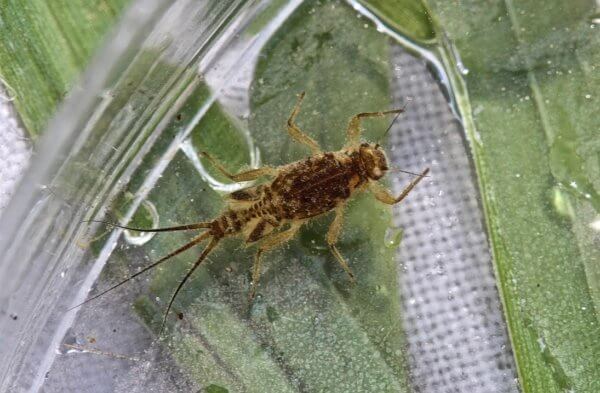There’s a small but dedicated cadre of nymph fishermen who go small all the time. It seems contra-indicated in Missoula, where you’re surrounded by Salmon Fly, Golden Stone and Skwala nymphs, but we’ve seen the proof, and tiny nymphs work in Missoula. We’re talking about size 18 and smaller, mostly used on a standard nymph rig. They can be used on a euronymph rig, but you’ll need to take extra steps in rigging to get the smaller flies deep enough quickly enough.
We understand the conundrum. You’re standing on the bank of a river that’s 80’ wide. It takes some mental gymnastics to convince yourself that any trout would be looking for food that small. It’s also easy to fall into the mindset of even if the trout are eating them, how are they going to find something 5mm long in such a huge area. But it makes sense to go tiny more often then most of us do, and this is why.
Midges are one of the most prolific insects in any body of water. In Missoula rivers, we tend to focus on them in Winter, when they continue to hatch, and are eaten by the trout on the surface. But the next time you’re on the water in Spring, Fall or Summer, look for midges flying. You’ll find them. The fish don’t care (see Skwala, Salmon and Golden!) but the insects are out and moving. This means the Midge larva are available to trout 365 days a year. Consistent food will find consistent feeders.
There is also a constant supply of tiny mayfly nymphs year round as well. When a mayfly lays its eggs, it lays anywhere from 100-500. When they hatch, they are close to microscopic, and of little value to the fish. But there are a lot of them. With some growth, they hit a size 22 and the fish begin to take notice. This is an extremely plentiful food source, and as mayflies hatch from Spring to Fall, this underwater cycle goes on for 9 months as well. Add caddis larva and stoneflies to that same cycle as well, and the trout has a myriad food supply if they can find the correct lie.
The last factor comes into play when you’re fishing hard fished water. When a stream is seeing a lot of anglers, and the fish are getting hooked frequently, they rapidly learn larger food forms are dangerous to their health! Think about the Yellow Breeches in PA, the Farmington in CT and the San Juan or Green River out west. These rivers see 100’s of anglers every day. These highly educated fish have seen it all, and a larger fly simply doesn’t look natural to these fish any longer. But a tiny fly, by definition, has less going on. They’re easier to imitate, and they look more realistic to the trout. When you’re struggling to find a place to access the water due to pressure, you might use your down time to rig tiny for more success.
Tiny nymphs take the same care in rigging as tiny dries. You have to go to light tippet, 5X and thinner. The thinner tippet allows the fly to behave in a more natural way, as well as allowing these lighter flies to sink faster. This is also the place where your microshot comes into play. This type of fishing is way too subtle for a B or BB size lead weight- you need to get your tiny weight out, and rig accordingly. The large lead is simply too dramatic with a smaller fly, dragging the nymph in an unrealistic way along the bottom. Because the rig is so lightweight, scale your indicator down as well. You don’t need a ¾” inch Thing-A-Ma-Bobber to hold these flies up, and on hard fished waters a smaller, lighter indicator is so much less intrusive.
Depth control is crucial with tiny nymphs. While a trout may roam 2-3 feet to take a Salmon Fly nymph, they’re not going to move far to take a 5mm insect. You need to put these flies directly in front of the trout, or they’re not going to eat them. The energy expenditure is too great for the calories taken in. “Foam is Home” is never so important as when fishing tiny. The foam you see on the surface tells you where the currents are coming together in the river, which in turn tells you where the majority of food will be. Get your indicator in the foam line and let it ride.
Classic depth of your nymph is 1.5 times the depth of the water. But when going tiny, use a bit more length from your indicator. Tiny flies don’t sink all that rapidly, even with microshot, so they don’t stretch out tippet as well as a larger fly does. The extra length allows the fly to reach the depth needed to take fish. The only time this might not apply is if you’re using a small perdigon in your rig. Perdigons, with their tungsten bead and coated bodies, sink very rapidly. With a perdigon, you may be able to run less length from your indicator because the sink rate is so much greater. As a rule, tiny flies will require tiny adjustments to your leader to be effective.
Some may be asking why you don’t take a fast sinking fly like a wire worm or Pat’s Rubberlegs and attach it above the smaller fly to get it to sink more rapidly. This technique certainly works in less pressured water, where fish are less apt to shy from a larger bug. But in those high pressure situations, a larger bug may serve to drive the fish away. Also, at least in Montana, the maximum legal number of flies that can be used is two. We prefer to have two effective bugs if we can, so the larger bug is less useful in those situations. Go with two effective bugs, not a single fly and what’s essentially weight.
When you’ve found a likely spot, don’t be in a hurry to move. This is delicate nymphing, and not easy to control because of the light weight. Drag, any drag at all, will keep these flies from sinking. So you might want to make more than a few passes where you think the fish are. Not every presentation is perfect. Allow some wiggle room to make sure your fly is getting to the fish in a natural way, It won’t happen every cast, so make sure you make enough casts that it does actually happen! Drag is the enemy at all times, but its affects are magnified with lighter flies and longer leaders.
It’s so easy to fall into the thought pattern of big flies taking big fish. Which is true in so many times and in so many places. But while it’s a good thought, it’s not the only way to think about what will take trout. Trout are always on the lookout for a consistent food source, and tiny nymphs are there all the time. A constant stream of small food is as good as minimal stream of large food, from a caloric standpoint. If you can broaden your nymph selection to cover the tiny flies that are so abundant in the river, you’re going to find yourself getting into more trout. Plus, think how much fun you’ll have learning that when on a big river, the tiny flies are as effective, if not more so than those size 4 Double Bead Stones!

